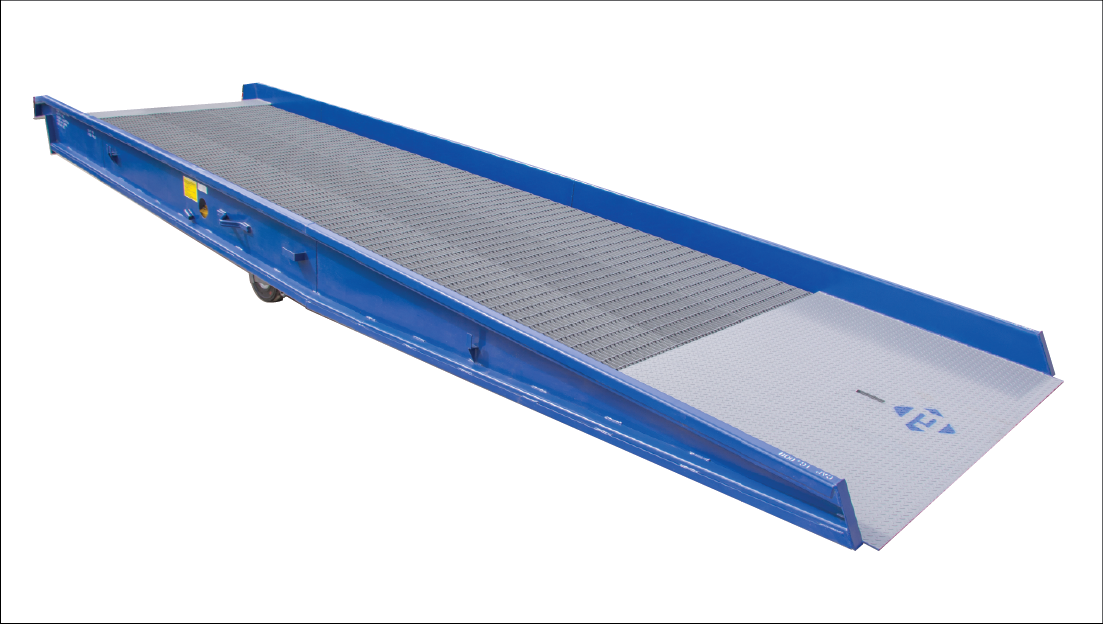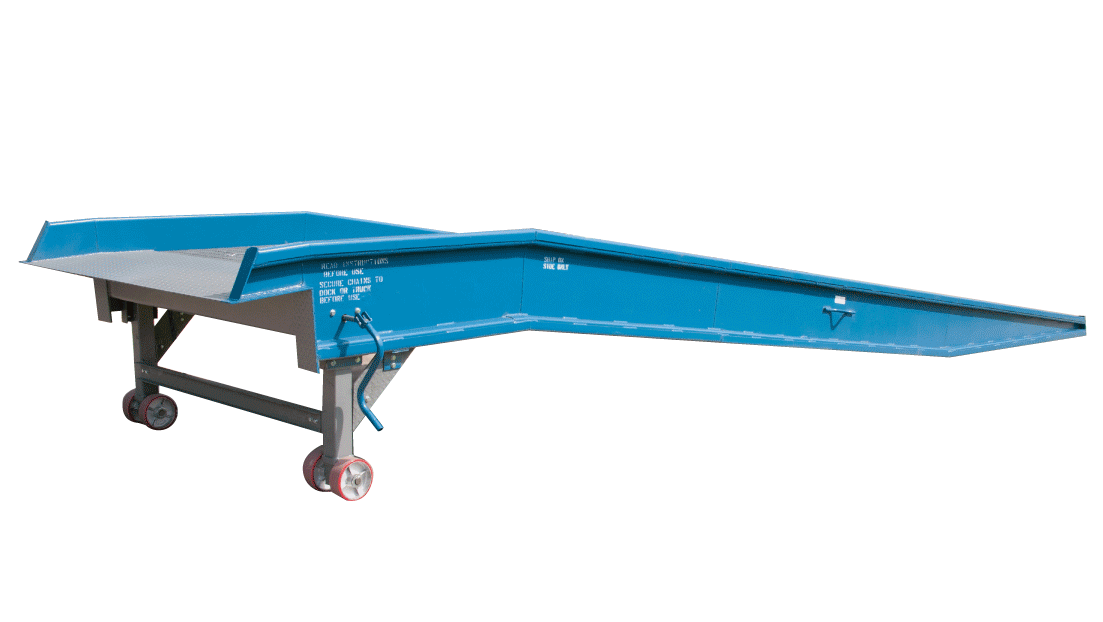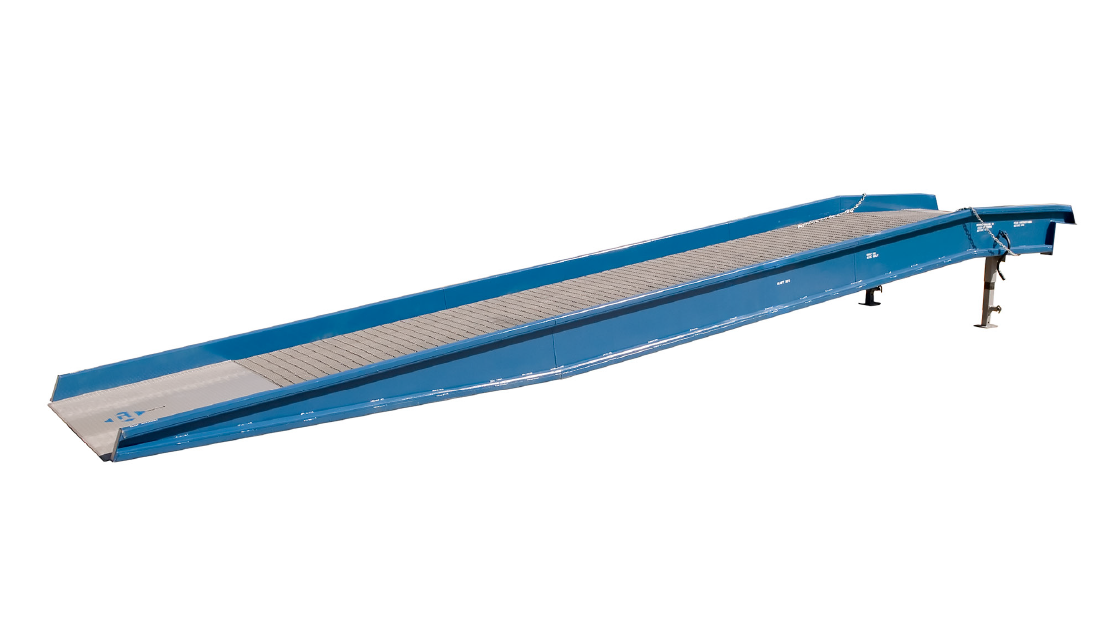|
Tuesday, May 29 2018
Hydraulic Undercarriage, Adjustable legs, or legs with casters, which is right for me?To answer this question effectivly first we'll need to cover the uses and limitations of each style. Yard Ramps With Hydraulic Undercarriage:
Yard Ramps with hydraulic undercarriages have the greatest degree of mobility and range of use reaching heights of 60"+, while also dropping down to low as 35" from the ground. The 18" solid rubber tires make towing the ramp across long distances safe and efficient. The draw backs presented by this style is the necessity to ensure the pumps pressure is released whenever storing or using the ramp to preserve the life of the pump. Use: By design all Yard Ramp models are not intended to be impacted by a trailer, rather the Yard Ramps hydraulic pump will need to be actuated via a removable handle to a height where the lip clears the floor height of the trailer or dock. The ramp will then need to be moved towards the trailer until the stop plates come into contact with trailer or dock. Once the ramps stop plates have come into contact, the ramps pump will need to have the pressure released prior to loading.
Yard Ramps With Adjustable Legs and Casters:
Designed to compete with the traditional hydraulic undercarriage, adjustable legs with caster wheels come at a lower price point while also removing the limited life span associated with hydraulic pumps. The only limitation here is the ramps service range is reduced considerably due to the range adjustable legs can adjust. Use: Like models with Hydraulic Undercarriages the caster model yard ramp will need to be raised and pushed up against the the trailer or dock until there is contact with the ramps stop plates. Once in position the legs will need to be retracted until they are far enough off the ground they wont come into contact when loading and unloading. Note: Yard Ramp legs are not designed to support the weight of a forklift, always ensure the ramps legs are raised prior to use or damage to the ramp will occur.
Yard Ramps With Legs:
Designed for stationary use, Yard Ramps with adjustable legs are the immobile variation of the caster model yard ramp. Same as the two models above this ramp shouldn't be impacted by trailers, nor should it be operated on when the lip isn't resting on the trailer with the legs raised. In use, this ramp will require effective communication between a spotter and trailer tractor operator to ensure the ramp is not hit when placing the lip.
ConclusionChoosing which of these ramp models will best suit your operation inevitably comes down to what your specific needs are. That said, for most loading operations where your service range requirement falls within 42" - 59", the caster leg model yard ramp stands out as the greatest value over cost. With this model you'll avoid down time due to a faulty pump while also reducing much of the repair replacement costs you'll be dealing with in the future as the pumps seals eventually wear out. |


